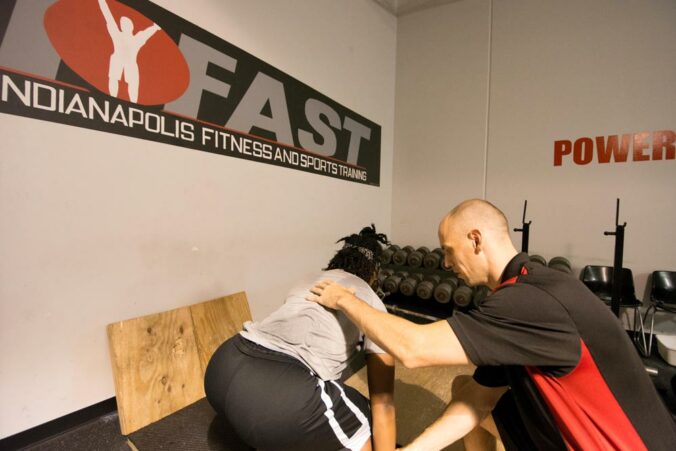Humans are complex, and movement can be complicated. Why does your client always bend over when they do squats? Why do they do that weird thing with their back on some days? How can they understand it more simply?
Fixing movement is simple: make the wrong stuff look right.
Okay, smart guy, but how do I know what is wrong?
THAT’S the hard part.
Fixing movement is simple for me now that I’ve coached for roughly a decade. But that’s only because I’ve meticulously dissected thousands of reps. Now I can identify what I like and what I don’t like.
- That squat looks like a deadlift. I don’t like it for this person.
- That push up looks like they’re doing The Worm. I don’t like it.
- That deadlift looks like it hurts. I don’t like it at all.
Deciding what you DON’T like is easy… but only once you know what you DO like.
For example, there might be three dozen different squat faults you could identify…
- Forward shift
- Right shift
- Right-forward shift
- Left shift
- Left-forward shift
- Backward shift
- Right-backward shift
- Left-backward shift
- Knee collapse
- Knee splay
- Foot collapse
- Arching back at the top
- Never neutralizing back position
- Arching back at the bottom
- Rounding back at the bottom
- Collapsing chest at the bottom
- Looking too far down
- Not setting eye gaze
- Wearing poor shoes for squatting
- Limited ankle mobility
- Squatting too deep
- Squatting too shallow
- Shifting forward only at the bottom
- Shifting backward only at the top
- Shifting forward only at the top
- Spinning everything on the way up
- Squatting with the bar too low
- Collapsing one foot but not the other
- Collapsing one knee but not the other
- Not finishing with glutes
- Not driving out of the bottom with the legs
- Losing ab tension on the way up
- Losing upper back tension on the way up
- Looking too far up
- Thinking about too many things
- Being weak out of the bottom
That took me about 6 minutes to list. But how long did it take to build that database of squatting mistakes?
It takes a long time.
And that’s necessary. Experience begets competence. That’s how you can become a master of your craft.
But there is a quicker way. It’s not easy, but it is quicker.
You want to understand what “normal” looks like.
Think about how much simpler it is to simply say, “That doesn’t look right. If I do _________________, then it might look right.”
That’s it. It’s not, “You’re losing your upper back at the bottom of the lift. I want you to keep your upper back tight. Oh that didn’t work. Well… think about squeezing your shoulders together while you squat. Squeeze harder! Yes yes yes! Eh, no. That’s no better.”
Hey! Some of that is just coaching. It’s an art. You play with cues you like and sometimes they don’t work.
But let’s say you have a group of twenty people. Can you cue them?
Some would say no, but I think you can. I’ve done it. But your cues have to be dialed in. So does your exercise selection, but that’s a talk for another day.
But now the burning question: how in the world do you find out what “normal” looks like?
THAT’S the hard part.
And that’s also why I put together this mentorship.
I think I can teach you most of what you need to know is roughly 24 hours of hard work. NOT 24 hours of daytime, but 24 hours of focused, deliberate practice. 24 hours of nose to the grindstone. 24 hours of well slept, highly caffeinated attention.
At least, I think we can do that if you’re a somewhat experienced coach. You have some coaching reps under your belt. You’re already familiar with the process of seeing movement and giving cues. You probably just need some re-focusing. And more coaching reps never hurt either.
How does it work?
I think most people get into the fitness industry because they learn well by doing. We have to get our hands dirty. We have to coach each other. We have to look at movement in a new light. And we have to have reasons for the cues we give.
You can say, “Chest up!” But if the problem is in the hamstrings, that cue probably isn’t going to work.
So we work together to identify “normal”. Then we can use our instincts, harness our creativity, and come up with cues that work for us.
First, we become scientists. Then, we become artists.
Will you join us?

Add some color to this commentary.